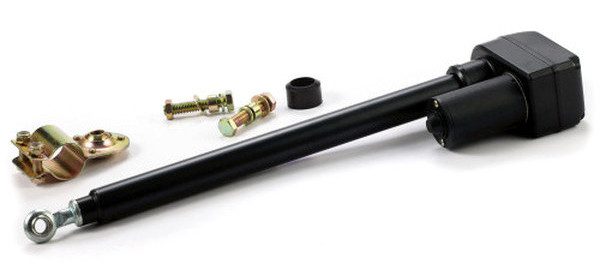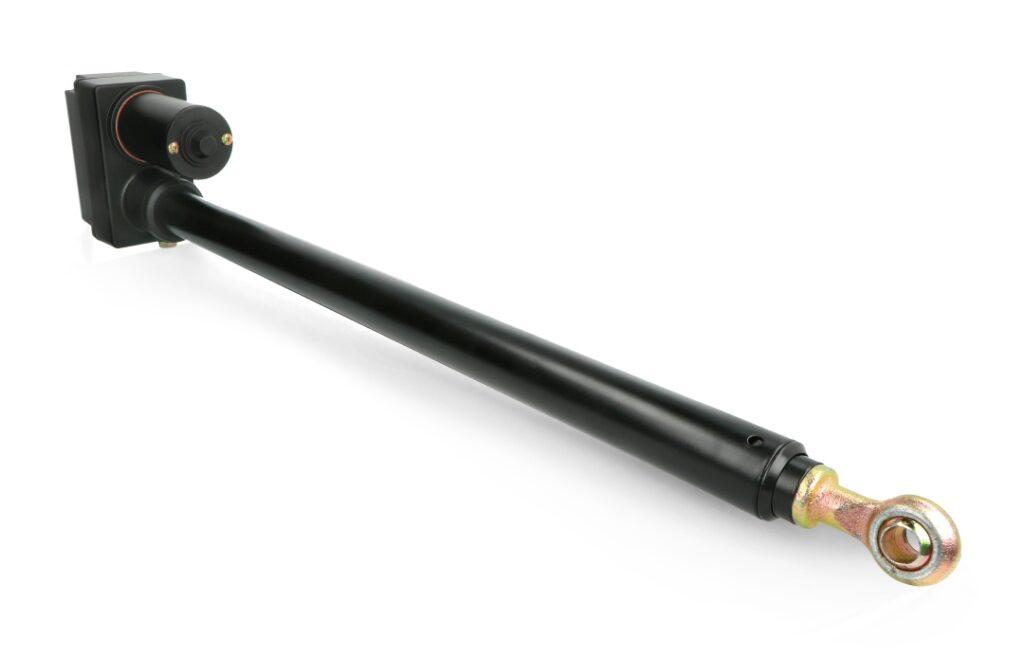Table of Contents:
A linear electric actuator is a device used to convert electrical energy into linear motion, among other things. In automation, robotics and industry.
What is a linear actuator?
Electric linear actuators are mechanical devices capable of converting electrical energy into linear motion within a certain range. The primary function of linear actuators is to move or shift an object in a straight line. Unlike pneumatic and hydraulic actuators, the movement is not generated using a compressed medium (air or hydraulic fluid), but using electricity. The actuators are driven by an electric motor. Depending on the specific application, stepper motors or servo motors are used.
The devices are equipped with sensors and controllers that provide data on the current position, speed and force of the actuator. With them, it is possible to precisely control the movement of the actuator.
How does an electric linear actuator work?
To linear actuator can start operating, the connected electric motor must receive an activation command sent by the controller. The actuated drive unit generates rotational motion at a specific speed. The movement of the shaft is transmitted to the pull bolt, which is also made to rotate, causing the nut to move. This is how rotary motion is changed to linear.
The speed and direction of linear motion are controlled by a controller that receives information from the aforementioned position sensors. The main advantages of electric linear actuators include high precision operation, repeatable movements and easy integration into various applications.
Construction of the electric linear actuator
Linear actuators have a simple and therefore reliable design. Selected models are designed for continuous operation, thanks to minimal wear during operation. The key component of the structure is the propeller, also known as the propeller. This is nothing more than a shaft with a spiral groove. This component is designed to effectively convert the rotary motion of the electric motor into linear motion of the actuator.
The drive screw works together with the nut, another important part of the design. The nut moves along the rotating screw. The material of the nut depends on the specific requirements of the application regarding, among other things. operating speeds and loads.
The next components are conductors and bearings. These are the elements responsible for ensuring the stability and smoothness of the nut moving along the bolt. The bearings are designed to reduce friction and thus wear on the actuator. These components are essential for long-lasting and reliable operation. Other components include position sensors and controllers, which are electronic devices that control the operation of the motor through the signals they receive.
Features of linear actuators
The linear actuator has the ability to self-brake when the electric motor is not running. In everyday use, this means that there is no way to slide the piston in and out. The actuator will hold the weight even if the power is disconnected.
Linear actuators are valued for their high efficiency and performance. Compared to hydraulic and pneumatic models, they have higher energy efficiency. This means that they require less energy than hydraulic and pneumatic devices to do the same work. Another advantage is quiet operation, so the actuators can be successfully used in environments where a certain noise level cannot be exceeded. The widespread use of electric linear actuators is due to, among other things. Of minimal maintenance. Not having to change filters and hydraulic fluid reduces operating costs.
Other properties
With no risk of fluid leakage, electric actuators are considered safe to use. In addition, they do not pose a potential threat to the environment and at the same time are versatile. They can be used in both small home appliances and powerful industrial machines. Unlike hydraulic systems, they are easy and quick to install. The different actuator models differ from each other, among other things. supply voltage. A sizable group are models powered by 12 V DC. It is not difficult to find actuators that require 24 V or 36 V to operate.
Technical parameters of linear actuators
There is no one-size-fits-all linear actuator that can be used in any system, machine, device or DIY project. Actuators differ in the technical parameters that determine their application. One of them is lifting capacity (strength). This value determines the maximum force that the actuator can generate during operation. The lifting capacity parameter is mostly given by manufacturers in kilograms and Niutons.
Another is stroke, or range of motion. This feature determines the length to which the actuator piston can move. In addition to length, the speed of movement is also important. The next parameter determines the speed at which the piston moves. Mostly, the higher the speed, the lower the lifting capacity. In precision systems, positioning accuracy is extremely important. This parameter determines the precision with which the actuator can place the object in the programmed location. Other parameters include operating temperature range, duty cycle, repeatability and IP protection.
Application of linear actuators
Linear actuators are commonly used in industry to manipulate objects with precision. In addition, they are responsible for the complex movements of equipment and machinery. Actuators are also used in the automotive, agricultural and garden industries. In addition, they are used in home automation systems, robotics and manual control systems.
How useful was this post?
Click on a star to rate it!
Average rating 0 / 5. Vote count: 0
No votes so far! Be the first to rate this post.





















